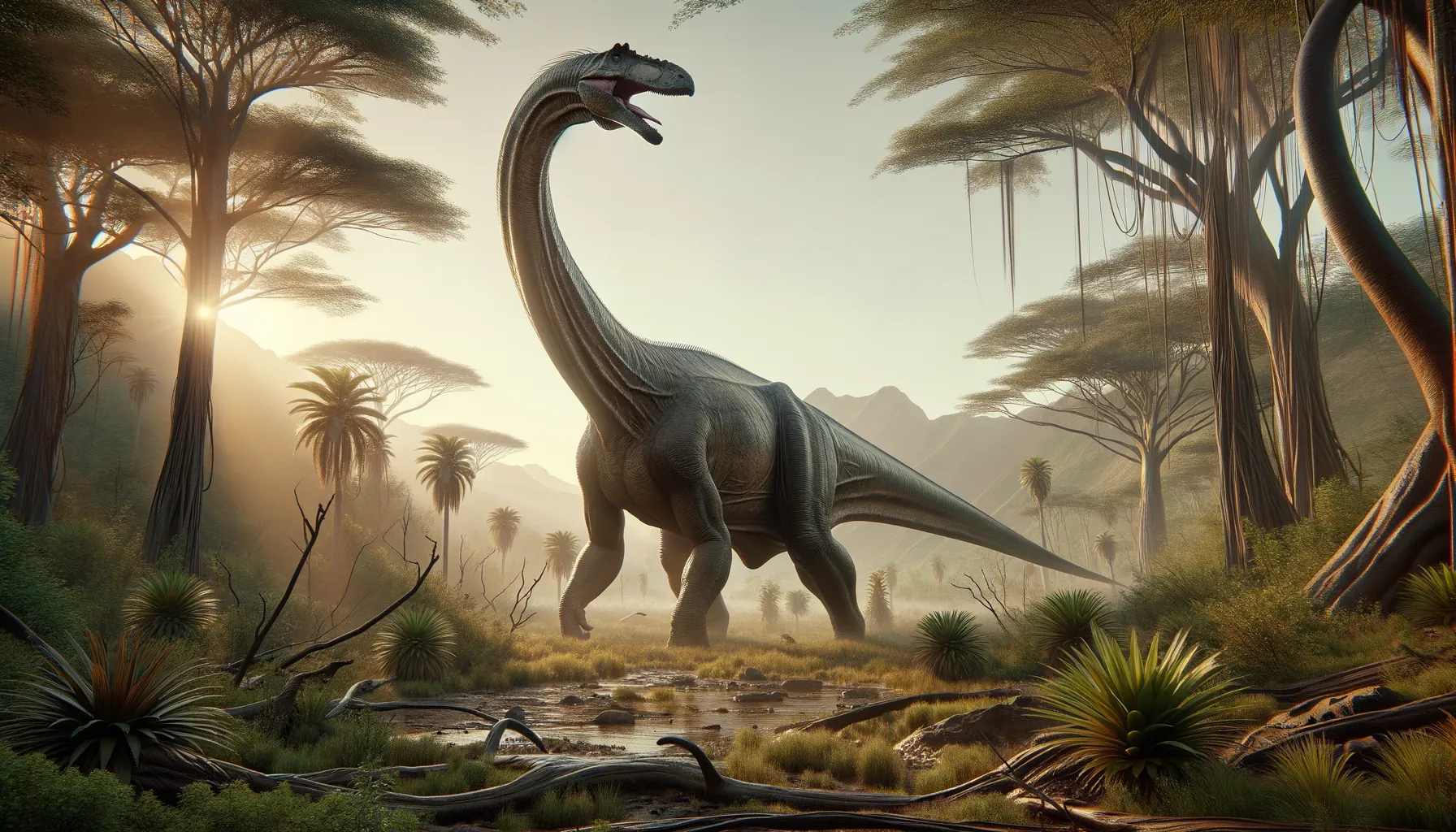
Huanghetitan
Explore the giants of prehistoric times!
Period
Cretaceous
Length
Measured about 20 meters in length.
Height
Could reach up to 12 meters tall.
Weight
Weighed around 30,000 kilograms.
Huanghetitan was an enormous, long-necked dinosaur that roamed the Earth during the Cretaceous period. Known for its gigantic size, it was one of the many sauropods, characterized by its immense weight and towering height. This dinosaur is notable for its lengthy neck that allowed it to reach high vegetation, making it a remarkable herbivore of its time. Fossils of Huanghetitan provide valuable insights into the world of giant sauropods and their ecosystems.
Diet
Huanghetitan was an herbivore, feeding primarily on leaves and other plant materials. Its long neck enabled it to reach high branches and foliage, giving it access to food sources unavailable to smaller herbivores.
Hunting
As an herbivore, Huanghetitan did not engage in hunting. Instead, it relied on grazing and foraging within its habitat to find sufficient vegetation to sustain its large body.
Environmental challenges
Huanghetitan faced challenges such as finding enough food to sustain its massive size. It lived in environments that could sometimes be harsh, with fluctuating resources due to climate changes. Predators, though smaller, could pose a threat to the young and vulnerable individuals, necessitating protective social behaviors.
Speed
It moved very slowly due to its massive size.
Lifespan
Estimated to live for several decades.
First discovery
First discovered in China in the early 21st century.
Fun Facts
- Huanghetitan was a massive dinosaur that lived around 100 to 120 million years ago during the Early Cretaceous period.
- Its name, Huanghetitan, means 'Yellow River Titan,' named after the Yellow River in China near where its fossils were discovered.
- Huanghetitan was a sauropod, a type of long-necked, plant-eating dinosaur, which means it had a small head, long neck and tail, and massive body.
- Despite its enormous size, Huanghetitan, like other sauropods, likely had a very small brain compared to its body size.
- Huanghetitan's bones were first discovered in Henan Province, China, in 2006, and it is one of the few Titanosaurs to be found in the region.
- Even though it was gigantic, Huanghetitan was a herbivore, meaning it only ate plants and may have stripped leaves from tall trees with its long neck.
- Studies suggest Huanghetitan and other sauropods lived in herds, probably moving together to find enough food to sustain their giant bodies.
Growth and Development
Huanghetitan hatched from eggs and grew rapidly, requiring vast amounts of plants. Juveniles were vulnerable and relied on the herd for protection. As they grew, their immense size became a natural deterrent against potential predators.
Habitat
Lived in areas that were lush with vegetation to support its herbivorous diet. Its habitat likely included forests and open plains where it could graze. Seasonal changes could impact its food sources, encouraging migrations to new areas in search of abundant plant life.
Interaction with other species
It coexisted with other herbivorous dinosaurs, often forming mixed-species herds for increased protection. Predatory dinosaurs posed a threat, and juveniles especially required protective measures from adults. Its size allowed it to dominate its surroundings, influencing plant growth patterns.
Natural lifespan
Huanghetitan could live up to 70 years if conditions were favorable.
Reproduction
Huanghetitan laid eggs in clutches, with nests likely constructed in secluded areas. Parental care was minimal, leaving young to hatch and fend for themselves with group support. Hatchlings were vulnerable but grew rapidly to gain protective size.
Social behaviour
Lived in herds that provided protection and aided in survival. Group living helped deter predators and facilitated the search for food over large territories. Within the herd, younger members benefitted from the protection of large adults.
Fossil locations
Huanghetitan fossils have been primarily found in China. These discoveries contribute to understanding the distribution of sauropods in Asia. The locations of these fossils help scientists piece together the environmental conditions these dinosaurs faced.
